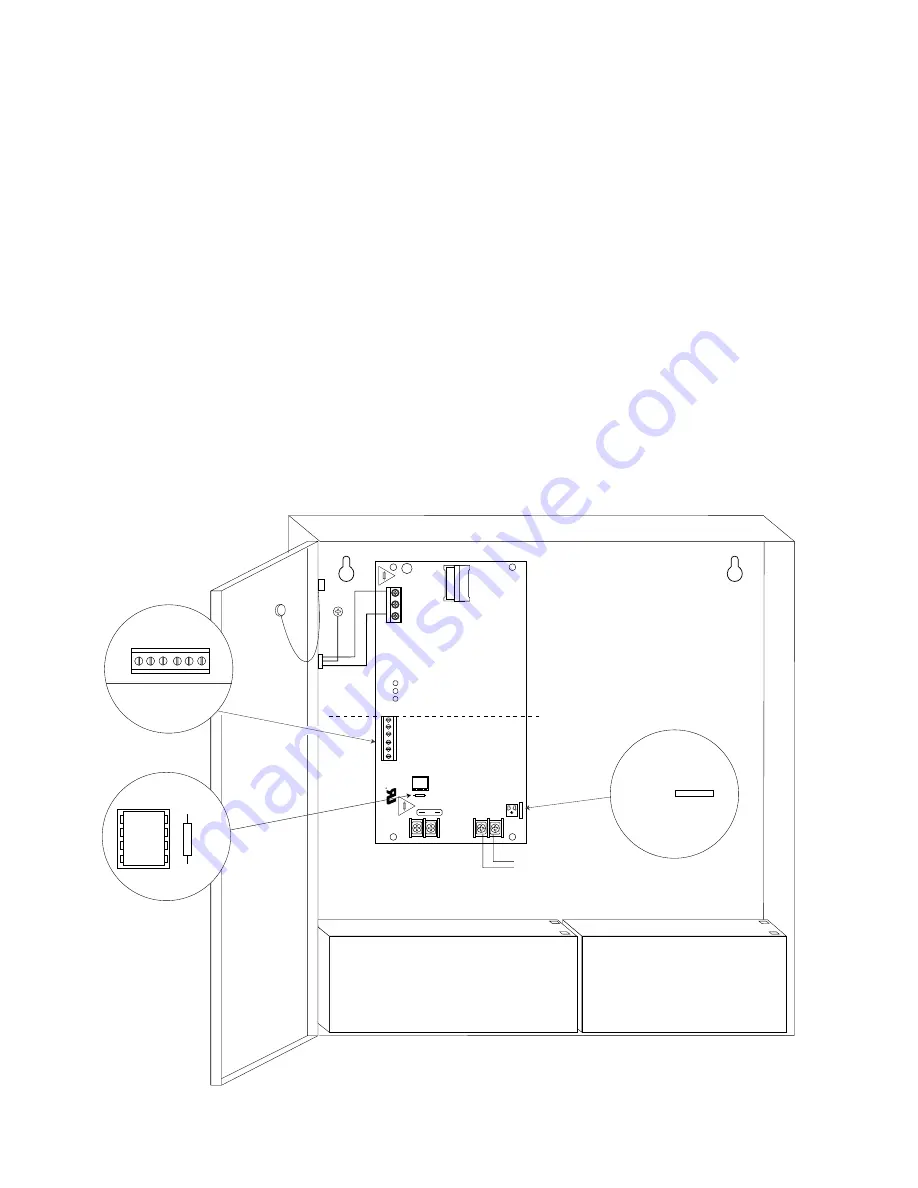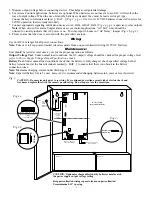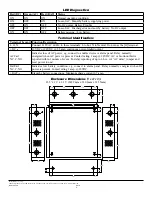
- 3 -
5. Measure output voltage before connecting devices. This helps avoid potential damage.
6. For Access Control applications, batteries are optional. When batteries are not used, a loss of AC will result in the
loss of output voltage. When the use of stand-by batteries is desired, they must be lead acid or gel type.
Connect battery to terminals marked [+ BAT –] (Fig. 2, pg. 3). Use two (2) 12VDC batteries connected in series for
24VDC operation (battery leads included).
7. Connect appropriate signaling notification devices to AC FAIL & BAT FAIL (Fig. 2a, pg. 3) supervisory relay outputs.
Note: When used in fire alarm, burglar alarm or access control applications, “AC Fail” relay should be
utilized to visually indicate that AC power is on. To delay report 6 hours cut “AC Delay” jumper (Fig. 2b, pg. 3).
8. Please ensure that the door is secured with the provided cam lock.
Wiring:
Use 14 AWG or larger for all power connections.
Note: Take care to keep power-limited circuits separate from non power-limited wiring (115VAC, Battery).
Maintenance:
Unit should be tested at least once a year for the proper operation as follows:
Output Voltage Test: Under normal load conditions, the DC output voltage should be checked for proper voltage level
(refer to Power Supply Voltage Output Specifications chart).
Battery Test: Under normal load conditions check that the battery is fully charged, check specified voltage both at
battery terminal and at the board terminals marked [+ BAT –] to ensure that there is no break in the battery
connection wires.
Note: Maximum charging current under discharge is 0.7 amp.
Note: Expected battery life is 5 years, however it is recommended changing batteries in 4 years or less if needed.
+
DC ---
NC C NO NC C NO
+
BAT ---
AC
DC
Bat
Risk of Fire,
Replace Fuses
As Marked
Opened - 24V
Closed - 12V
AC Fail
Bat Fail
J1
SW
1
5A 250V
15A 250V
AC Delay
15
L
G
N
Door
CAUTION: De-energize unit prior to servicing. For continued protection against risk of electric shock and
fire hazard replace fuse with the same type and rating. Do not expose to rain or moisture.
Battery 1
Battery 2
Green
Lead
Battery connection
(non power-limited)
Wire
Strap
(from
Enclosure
to Door)
115VAC
power mains
non power-
limited
Class 1
Do Not Touch
Exposed Metal Parts
DC Output to devices
(power-limited)
Opened - 24V
Closed - 12V
SW1
Battery & AC Supervision
Circuit
(power-limited)
NC C NO NC C NO AC Fail
Bat Fail
J1
AC Delay
CAUTION: Optional rechargeable stand-by batteries must match
the power supply output voltage setting.
Keep power-limited wiring separate from non power-limited.
Use minimum 0.25" spacing.
Fig. 2
Fig. 2a
Fig. 2b
Fig. 2c






















